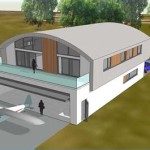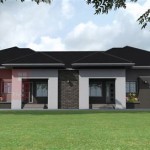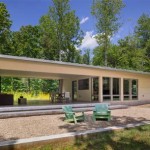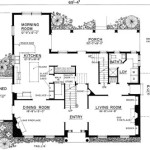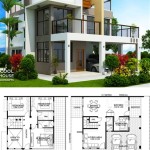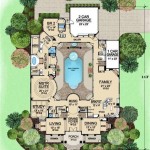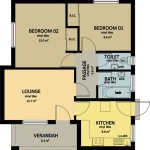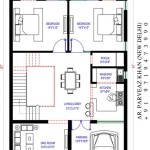Vastu House Plan For East Facing Plot: Principles and Guidelines
Vastu Shastra, the ancient Indian science of architecture, provides guidelines for creating harmonious living spaces that are in alignment with natural energies. When planning a house on an east-facing plot, adhering to Vastu principles can optimize the flow of positive energy, contributing to the well-being and prosperity of the residents. This article provides a comprehensive overview of Vastu guidelines for designing an east-facing house, covering various aspects from plot selection to room placement.
An east-facing plot is generally considered auspicious in Vastu Shastra. The rising sun is associated with new beginnings, clarity, and vitality. Properly harnessing the energy of the east can bring positive influences to the inhabitants of the house. However, the specific Vastu principles must be carefully considered and implemented to maximize the benefits.
Before commencing construction, a thorough analysis of the plot is crucial. The shape, slope, and surroundings of the plot can significantly impact the energy flow. Ideally, the plot should be square or rectangular, with the east and north sides being slightly longer than the west and south sides. A slope towards the east is considered auspicious, as it encourages the flow of positive energy into the property. The presence of any obstructions, such as tall buildings or trees, on the eastern side should also be taken into account, as they can potentially block the flow of sunlight and energy.
Once the plot is deemed suitable, the next step is to plan the layout of the house. The placement of rooms, doors, and windows according to Vastu principles is essential for creating a harmonious living environment. The cardinal directions – east, west, north, and south – play a significant role in determining the ideal location for different activities and functions within the house.
Key Considerations for East-Facing House Plans
Several critical factors need to be considered when designing an east-facing house according to Vastu Shastra. These factors include the placement of the main entrance, the location of rooms, and the orientation of the compound wall.
Entrance Placement: The main entrance is arguably the most important aspect of Vastu for any house. For an east-facing house, the entrance should ideally be located in the northeast or east portion of the plot. Vastu Shastra divides the eastern side into nine segments, with the fifth segment from the northeast corner being considered the most auspicious. Avoiding the southeast corner for the main entrance is generally recommended, as it can potentially bring negative energy.
The main door should be larger than other doors in the house and should open inwards in a clockwise direction. The entrance should be well-lit and free from any obstructions. Decorating the entrance with auspicious symbols, such as Swastika or Om, can further enhance its positive energy.
Room Placement: The placement of different rooms within the house should also adhere to Vastu principles. The living room, also known as the drawing room, is best located in the northeast or east portion of the house. This allows the occupants to benefit from the positive energy of the rising sun. The kitchen should ideally be located in the southeast corner, with the person cooking facing east. This arrangement is believed to bring health and prosperity.
The master bedroom should be located in the southwest corner of the house, providing stability and grounding energy. Children's bedrooms can be located in the northwest or west portion of the house. The study room is best placed in the northeast, promoting concentration and learning. Bathrooms and toilets should be located in the northwest or west, avoiding the northeast, east, and southeast corners.
Compound Wall Orientation: The compound wall should be constructed before commencing construction of the main house. For an east-facing plot, the eastern and northern walls should be slightly lower and thinner than the southern and western walls. This allows for the free flow of positive energy from the east and north. The main gate should be located in the northeast or east portion of the compound wall, aligning with the auspicious segments.
The compound wall should be constructed of durable materials and should be well-maintained. Any cracks or damage to the compound wall should be repaired promptly to prevent the leakage of positive energy. The landscaping of the compound should also be considered, with more open space in the east and north and heavier planting in the south and west.
Interior Design Considerations According to Vastu
Beyond the structural layout, Vastu principles also extend to the interior design of the house. Color schemes, furniture placement, and decorative elements can all contribute to the overall energy of the space.
Color Schemes: Vastu recommends using light and vibrant colors in the east and north portions of the house, such as white, cream, light yellow, and light green. These colors reflect sunlight and promote positive energy. In the south and west, heavier and darker colors can be used, such as brown, beige, and earthy tones. Avoid using dark colors in the northeast, as they can suppress the flow of positive energy. The color scheme should be harmonious and balanced, creating a sense of peace and tranquility.
Furniture Placement: The placement of furniture should be done in a way that does not obstruct the flow of energy. Heavy furniture should be placed in the south and west, while lighter furniture can be placed in the east and north. Avoid placing furniture in the center of the room, as this can block the flow of energy. Maintain sufficient open space to allow for the free movement of energy and people. Beds should be placed in the southwest corner of the bedroom, with the headboard facing south or west.
Decorative Elements: The use of decorative elements can further enhance the positive energy of the house. Auspicious symbols, such as Swastika, Om, and Shree, can be placed at the entrance and in other prominent areas of the house. Plants can be used to purify the air and bring positive energy. Water features, such as fountains or aquariums, can be placed in the northeast to promote wealth and prosperity. Avoid using sharp or aggressive artwork, as they can create disharmony. The overall decor should be tasteful and reflect the positive values of the inhabitants.
Addressing Common Vastu Defects in East-Facing Houses
Despite careful planning, some houses may have Vastu defects that need to be addressed. Identifying and rectifying these defects is crucial for mitigating their negative impact. Common Vastu defects in east-facing houses include obstructions on the eastern side, improperly placed entrances, and imbalances in the directional energy.
Obstructions on the Eastern Side: Tall buildings, trees, or other obstructions on the eastern side can block the flow of sunlight and positive energy. If such obstructions are unavoidable, remedies can be implemented to mitigate their impact. Placing mirrors on the eastern wall can help to reflect sunlight into the house. Planting smaller plants in the east can also help to filter the energy. Consulting with a Vastu expert is recommended to determine the most effective remedies.
Improperly Placed Entrances: If the main entrance is located in an inauspicious segment, such as the southeast corner, remedies can be implemented to correct the defect. Placing a Vastu pyramid near the entrance can help to neutralize the negative energy. Hanging a Shree Yantra above the entrance can also bring positive energy. In some cases, it may be possible to create a secondary entrance in an auspicious segment.
Imbalances in Directional Energy: Imbalances in the directional energy can occur due to various factors, such as the shape of the plot, the slope of the land, or the placement of rooms. Using Vastu corrections, such as placing crystals or gemstones in strategic locations, can help to balance the energy flow. Consulting with a Vastu expert is recommended to identify the specific imbalances and implement appropriate remedies.
In conclusion, designing an east-facing house according to Vastu principles can create a harmonious and prosperous living environment. By carefully considering the plot selection, room placement, interior design, and addressing any Vastu defects, homeowners can harness the positive energy of the east and create a home that supports their well-being.

East Facing Vastu House Plan 30 X45 N Plans Little

Best 4 East Facing House Vastu Plan For A Peaceful Life Namma Family

East Facing House Plan Vastu For

East Facing Vaastu Home Plan House Plans Vastu N

27 Best East Facing House Plans As Per Vastu Shastra Civilengi One Floor Simple

30 X40 East Facing House Plan Is Given As Per Vastu Shastra In This Autocad Drawing File Now Little Plans Layout Free
Miraculous East Facing House Plans As Per Vastu Shastra

Vastu Model Floor Plan For East Direction

30x40 East Facing House Vastu Plan Pune Architects Alacritys

27 Best East Facing House Plans As Per Vastu Shastra Civilengi One Floor Simple

